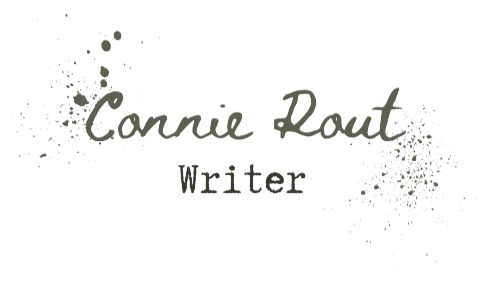How to write website copy like a pro
These days, a branded website isn’t just nice to have – for most businesses and organisations, it’s crucial for bringing in customers, visitors, or partners.
The first thing most people will do when they want to learn more about your business, is type its name into Google and go from there. It’s important your website gives a smashing first impression.
So how do you write website copy that’ll make your business shine?
Well, in terms of the written content, a fabulous website comes down to five things:
Deciding what your audience needs from your website
Deciding what you want your audience to get from your website
Keeping text snappy and readable
Considering how your words and images will work together
Making your web copy accessible for people and search engines
Let’s get into the juicy details.
Five top tips on writing effective website copy
1. Remember who you’re writing for
Yes, this means nailing tone of voice and branding, but there’s actually more to it than that, and it’s somewhere a lot of websites fall short.
You see, you’re not just writing for your audience – you’re writing for your audience who has come to your website for a specific reason. And your website’s job is to help users fulfil that mission.
So, what reasons might stakeholders visit your website?
It depends on your business or organisation, but broadly speaking, it’s probably a variation on one of the following:
They want to find out more about what you do
They want to contact you
They want to buy something from you
They want help in your area of expertise
Great website copy will make it easy for users to do what they came to your website to do, in as few clicks as possible.
Sometimes, that means making good use of internal links, buttons, and clickable content blocks. Sometimes, it’s about including engaging one-liners that explain where a certain button will take you. Often, you’ll need to decide what the number one reason for visiting your website is, and put that information in an obvious place on your homepage.
So, tailor your website to your audience’s needs.
But also…
2. Direct users where you want them to go
A website is for your audience, but at the end of the day it’s still your website – and you need it to work hard for your purposes.
While it’s important for users to find the information they’re looking for, you also want to make it easy for them to find the information that will benefit you (and them – even if they don’t know it yet!).
So, how do you write website copy that works in your favour?
Ask yourself what your main goals are. Heck – go wild and jot them down right now. Do you want to increase donations? Sell more products online? Encourage in-person visits?
Once you’ve decided the things you want users to get out of your website, your copy has to reflect that.
In practice, this could mean having calls to action in strategic locations.
Let’s say you’re making a website for a swimming pool and your main goal is to have people book in advance.
You would make sure the option to book a time slot is clear on your homepage, but also on other popular pages. So, at the bottom of your opening-times page, why not have a banner recommending users to book in advance, with a clickable button to take them to the bookings page?
Of course, your copy here has to be persuasive and readable, which takes us onto tip number three.
3. Keep things short and snappy
Knowing how to write website copy that hooks your reader, means recognising that you’re marketing your business in the Digital Age.
For the most part, you’re targeting people who are used to getting information quickly. They won’t want to work hard to find what they’re looking for – and, if it’s not obvious, they may very well head somewhere else.
Bear that in mind and make key information easy to read and digest.
That means breaking up long chunks of text into shorter paragraphs or sentences. It means using headings to signpost where people can find information. And it also means being extra thoughtful with the words you do have.
Give them impact.
How to write persuasive, engaging content – how to make every word count – is a whole other blog post in the making. Drop me a line if you’d like to work with a writer who does it on a daily basis!
4. Make images work to your advantage
Ultimately, you need visuals as well as words on your website. A top-notch website won’t rely completely on either.
The trick is to have the images and copy complement each other in a way that speaks to your branding.
Every so often, you might want to have an image/copy pairing where one wouldn’t work without the other. This can be a powerful storytelling device.
For example, a jeweller’s website might have the words ‘Your happy ending starts with us’ overlaying a photo of someone on one knee, proposing to their partner. The words without the image, or vice versa, wouldn’t make a whole lot of sense – but put them together and you have a neat little story in five words and one photo.
If you’re creating your website entirely by yourself, you can plan this out as you go. If you’re working with a designer and a copywriter, put them in touch with each other, so they can create harmonious results from the get go.
5. Prioritise accessibility
Sometimes, businesses think that to sound credible and authoritative, they need to use long, complicated words and industry terms. In reality, while this might suggest to your audience that you know your stuff, it won’t resonate with them.
Take these two sentences, which essentially say the same thing:
‘We demonstrate the diversity in genomic organization among animal papillomaviruses.’
‘We show the differences in the DNA structure of viruses that give animals warts.’
Which was easier to understand? Which would you be able to repeat, to remember? Unless you’re a biologist, you’re likely going for the second. And you probably switched off halfway through the first.
Remember, your clients are coming to you for your expert advice or skills, which means they might not know a great deal about the subject themselves.
Generally speaking, it’s a good rule of thumb to write copy using more common words. Experienced writers don’t need fancy words to make an impression – it’s about what you do with the words you use. And if half your audience doesn’t understand 10% of the words on your page, you’re not going to get your point across very well.
It’s also important to think about the accessibility tools people use to process your writing. For instance, creating copy that’s suitable for visually-impaired website users means writing with screen readers in mind.
It’s good practice to format your text appropriately for screen readers using the correct headings tags. You’ll also need to write alt text for images. This is the copy that screen readers pick up to describe the images on the page.
Happily, writing accessible content for people also happens to give you a healthier chance when it comes to search engine rankings.
Digestible chunks of text, understandable/common phrases, headings and sub-headings, and alt text all give you extra brownie points in Google’s SEO (search engine optimisation) books.
They’ll help your website to show up higher in the Google results page when people search for relevant queries, driving traffic your way.
And that’s that - my five top tips for effective website copy. One more time:
Giving your audience what they need
Giving your audience what you need
Choosing concise, digestible phrasing
Thinking about words and images
Prioritising accessibility
Now, go forth into the World Wide Web and put everything you’ve got behind your own site!
And if you’re not sure you have the time or headspace to get it done yourself, feel free to reach out. I craft cracking content from scratch or proofread your own words and polish them till they sparkle…

